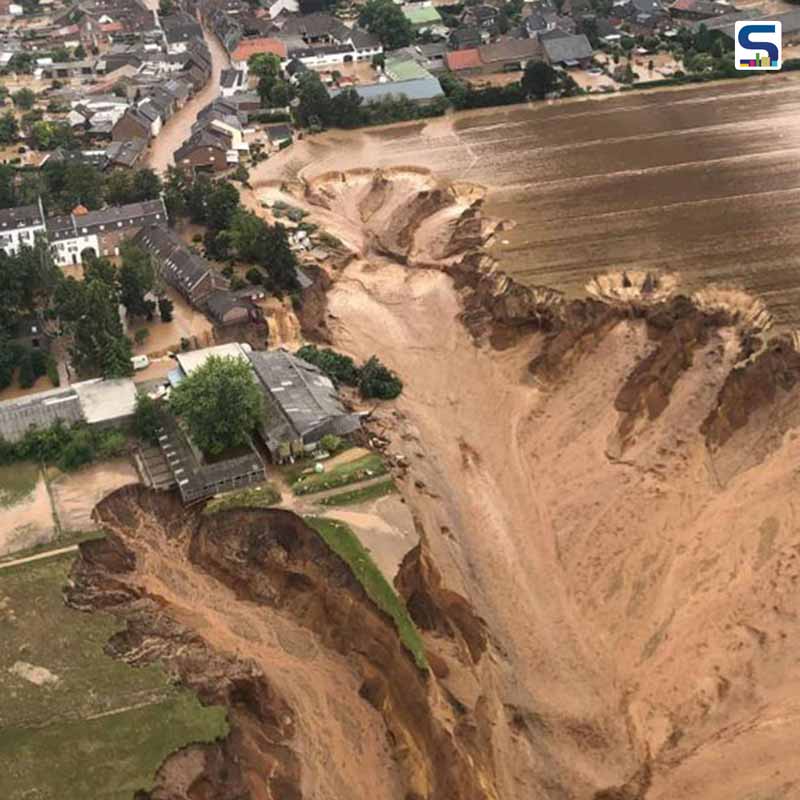
A view from flooding in the Blessem district of Erftstadt, Germany (2021). Image © Rhein-Erft-Kreis, AP
The Intergovernmental Panel on Climate Change ( IPCC) released first instalment of its Sixth Assessment Report on Monday, starkly revealing the "widespread, rapid and intensifying" climate change. The report states the measured increase in greenhouse gases leading to global warming. It documents "unless there are immediate, rapid and large-scale reductions in greenhouse gas emissions, limiting warming to close to 1.5°C or even 2°C will be beyond reach." Architects Climate Action Network and other UK climate pressure groups say it is a "call to arms'' for architects and designers that they must "make changes to the way they design" to help avert disastrous climate change. The report stresses that "Achieving global net-zero carbon dioxide emissions is a requirement for stabilizing carbon dioxide-induced global surface temperature increases." Read out the full sobering report here at SURFACES REPORTER (SR):
Also Read: Associated Architects unveil plans for worlds first net zero carbon ready skyscraper Curzon Wharf in Birmingham
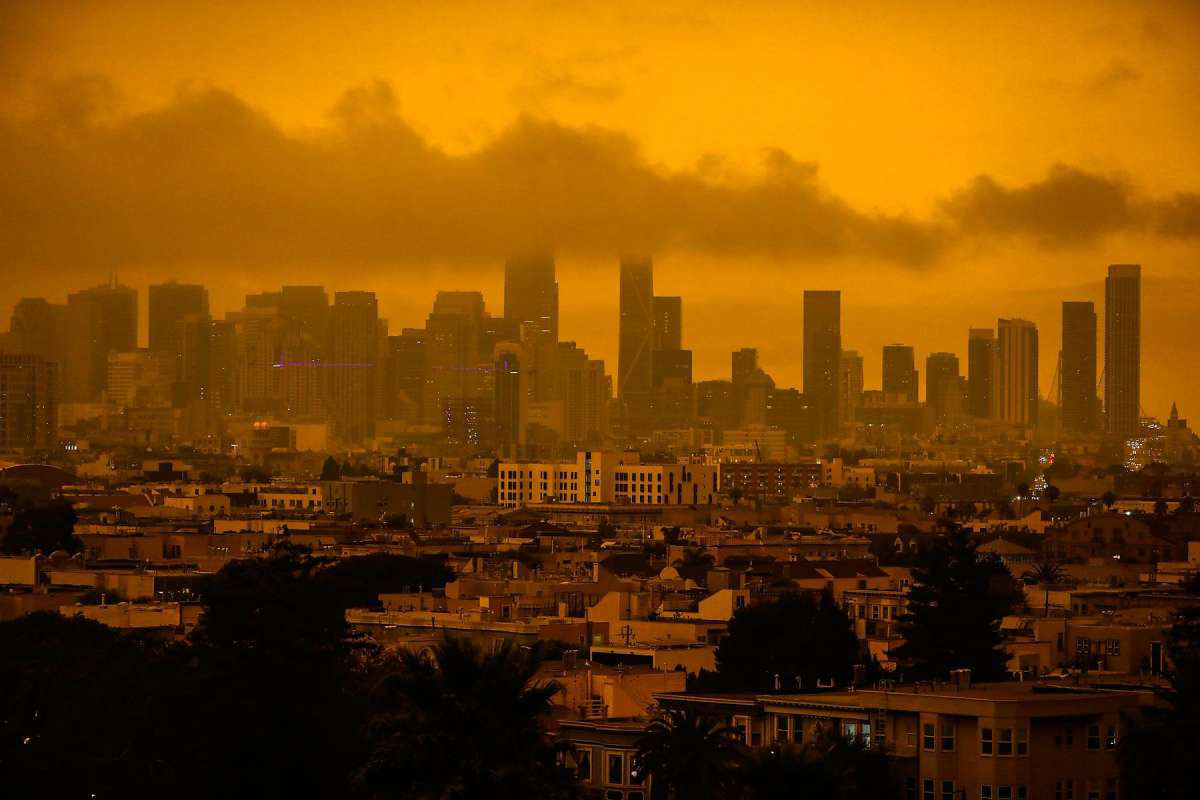
A view from downtown San Francisco, covered in haze and smoke from various wildfires (Wednesday, Sept. 9, 2020) in San Francisco, California. Image © Gabrielle Lurie / The Chronicle
Along with documenting the detailed scientific observations of climate change, its unprecedented growth, and catastrophic effect across the globe, the latest report also demonstrates five distinct "climate futures" based on possible societal responses to the changing climate.
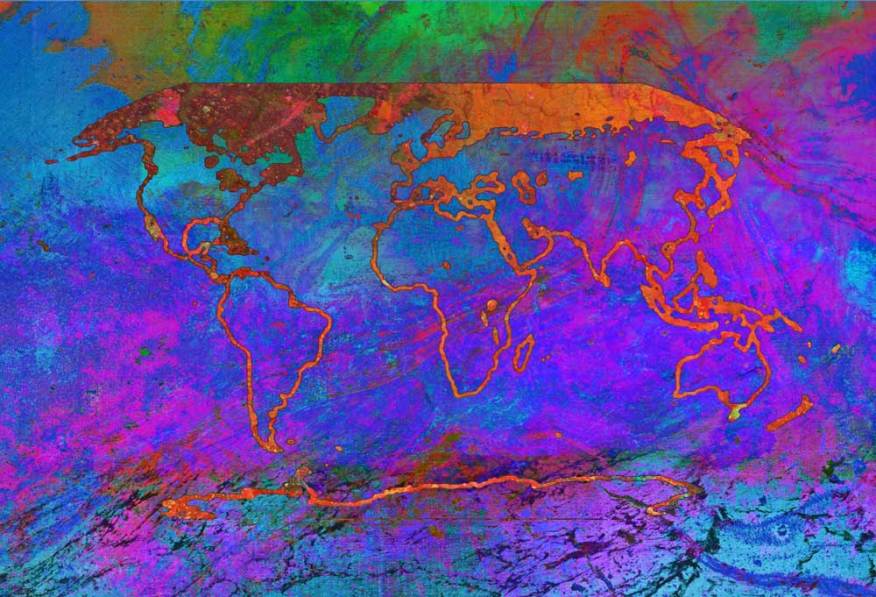
Courtesy IPCC Changing, by Alisa Singer
A 42-page report, titled Climate Change 2021: the Physical Science Basis, is the first major report, comprising 14,000 studies that will be completed in 2022. The report shows five possible scenarios explaining the different levels of emissions, which concludes 1.5 degrees of warming or more by 2040, breaking the Paris Agreement goals. The report was supposed to be released in April 2021 but was postponed for several months due to the Covid-19 pandemic. 234 authors from 66 countries created this report, and 517 contributing authors, based on more than 14,000 scientific papers.
1.5 degrees Celsius of Global Warming will bring "irreversible" changes
The report was released on Monday in preparation for November's COP26 summit. The crucial report reveals that controlling global warming to the vital 1.5-degree Celsius threshold set out in the Paris Agreement is now practically impossible. Furthermore, if the temperature increases, it may lead to "irreversible changes in sea levels and extreme weather events such as heatwaves, putting "billions of people at immediate risk," according to UN secretary-general António Guterres.
The threshold limit was set during the UN Framework Convention on Climate Change's (UNFCCC) 21st Conference of the Parties (COP 21) and December 2015. It was a set limit suggested in the report to bring the temperature below 1.5-degree Celsius to avert the disastrous effects of climate change.
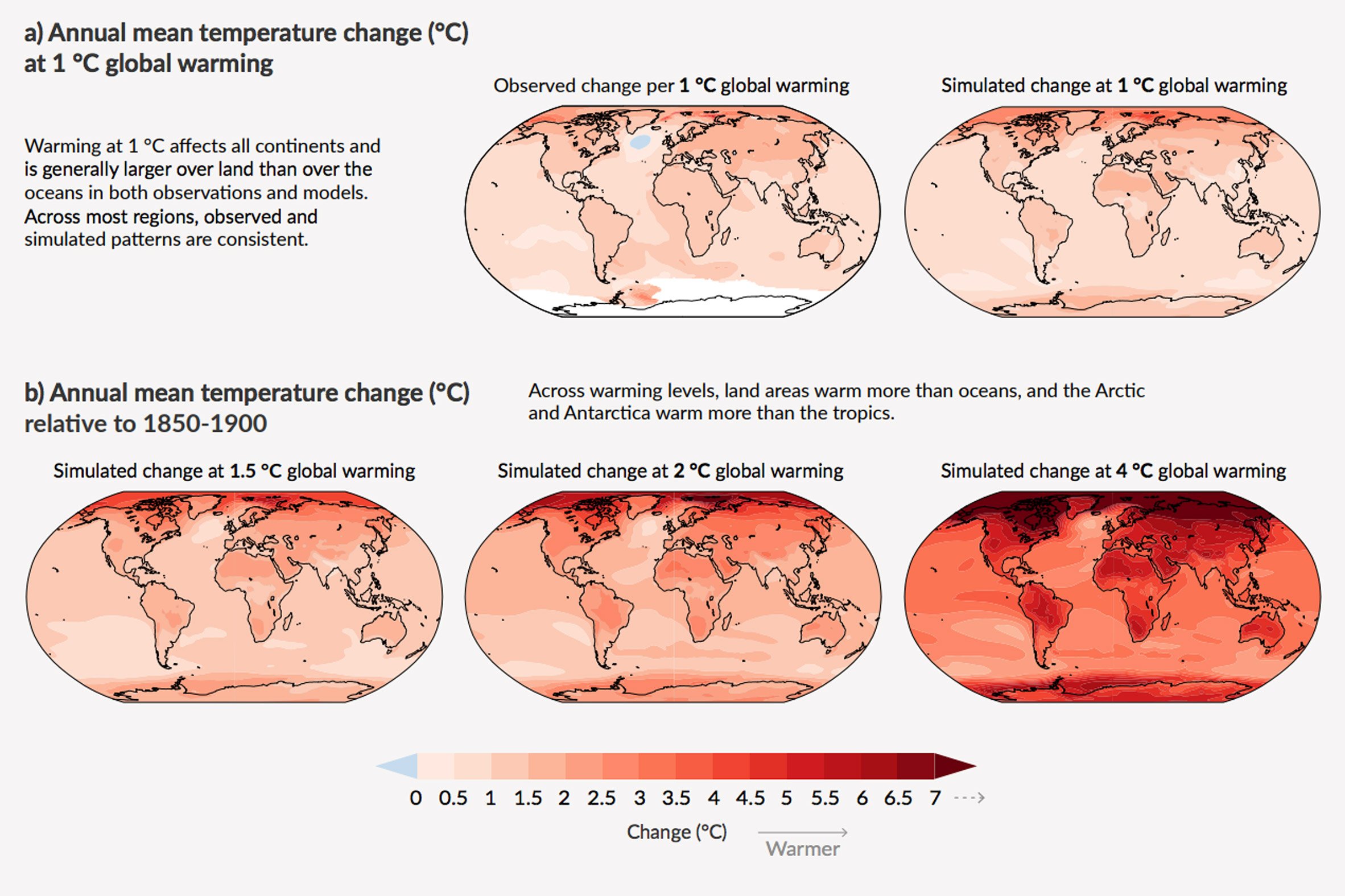
"With every increment of global warming, changes get larger in regional mean temperature, precipitation and soil moisture." Image © IPCC
The report asserts that we need to take quick and large-scale decisions in order to avoid climate change. According to a press statement of IPCC, "While benefits for air quality would come quickly, it could take 20-30 years to see global temperatures stabilize." Hoesung Lee, Chair of the IPCC, says that "extraordinary efforts under exceptional circumstances" are required to take.
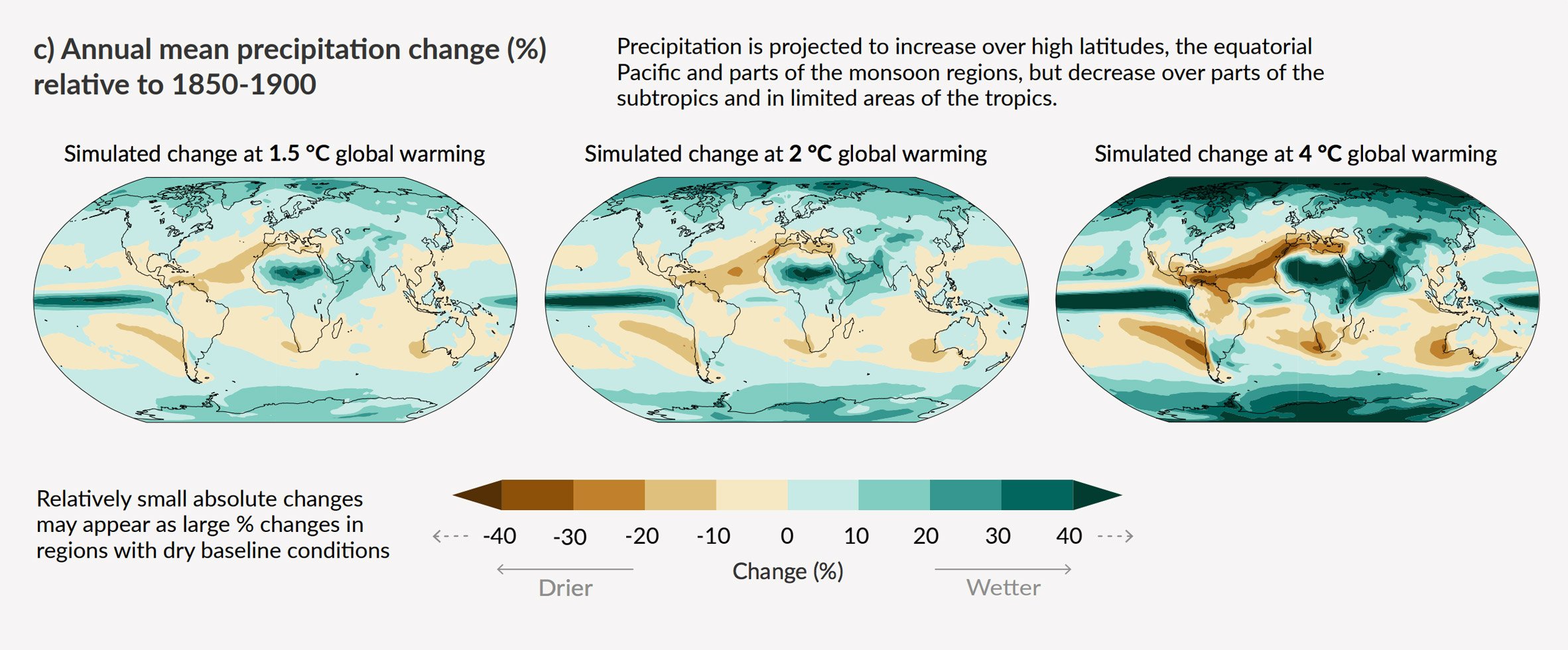
The graphic shows "annual mean precipitation change (%) relative to 1850-1900". Image © IPCC
The report informs that the concentrations of carbon dioxide emissions in the atmosphere have reached their highest level in two million years. The global temperature has already soared to 1.1 degrees Celsius compared to pre-industrial levels.
The worst-case scenario presented by IPCC forecasts that global warming of up to 5.7 degrees by the end of the century.
Require "Immediate, Rapid and Large-scale" Cuts to Greenhouse Gases
The report stresses that the quick, fast, and wide-scale reduction in carbon dioxide emissions (CO2) and other greenhouse gases could still help balance global temperatures around the set limit. Limiting global warming would dramatically reduce the intensity and severity of extreme weather conditions compared to a warming of two degrees or more above pre-industrial levels. According to the report, "strong and sustained" emissions reductions and Co2 removal from the atmosphere could help control temperatures between one to 1.8 degrees.
As climate reporter Andrew Revkin notes, humans are currently adding "40-billion-plus tons of greenhouse gases to the atmosphere each year (and rising)."
The IPCC stresses that reducing the temperature to 1.5°C is only possible if the world's governments speedily increase efforts to shift to renewable energy and de-carbonize economies. "Achieving global net-zero carbon dioxide emissions is a requirement for stabilizing carbon dioxide-induced global surface temperature increases."
Reformative, Carbon-Negative and Disaster Resistant Design is the Need of the Hour
According to the co-founder of environmental creative collective URGE, Ms Sophie Thomas, "design needs to shift completely" in the face of the new data.
"Old models do not apply now unless we are all happy to be part of the problem," she further added.
URGE co-founder Michael Pawlyn explained, "We need to urgently get to the point where everything we do is delivering a net positive impact."
"I think the latest climate science should make designers completely rethink our idea of success. What would it mean to be successful in perpetuating a system that will destroy the future for billions of people?"
"A world in which humanity can flourish within planetary boundaries is still possible and within reach but we need rapid system change if we are to achieve this," architect Andrew Waugh said on behalf of the collective.
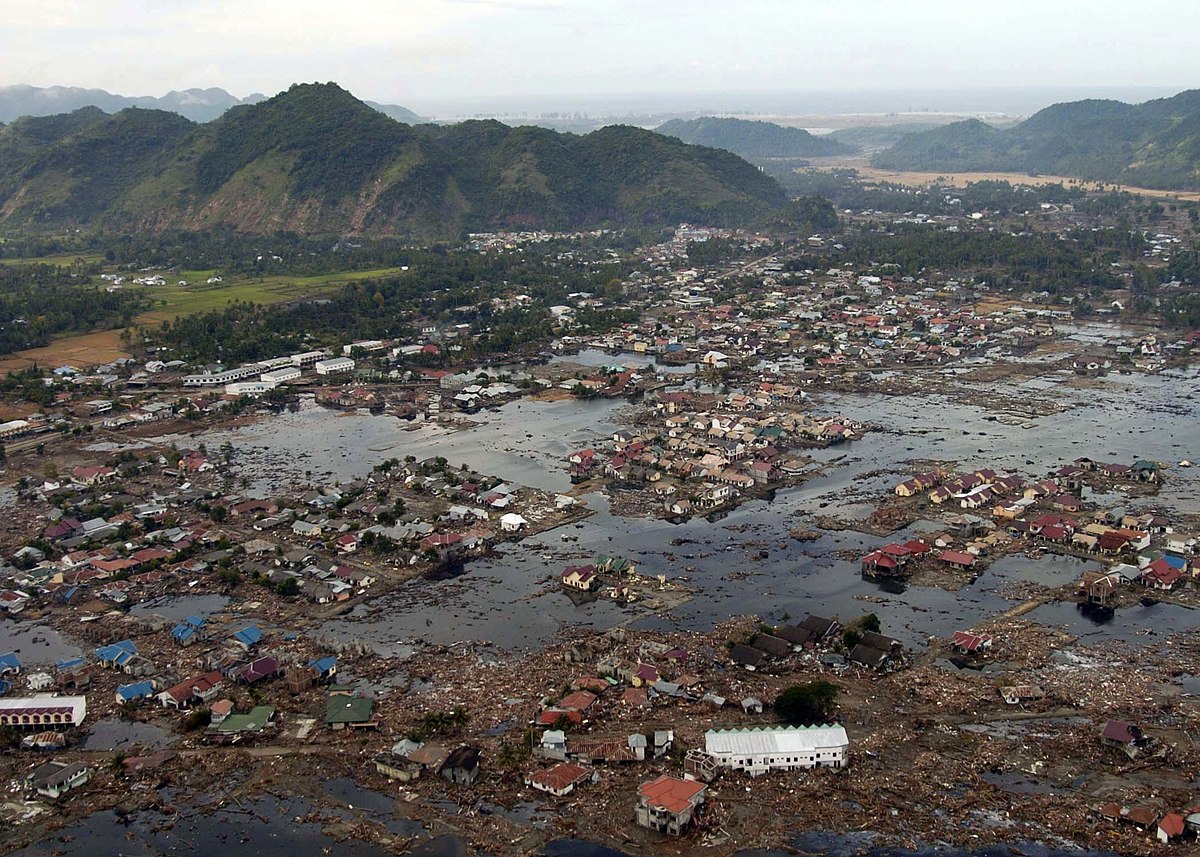
2004 Indian Ocean earthquake and tsunami - Wikipedia
As per Assael Architecture director Rory O'Hagan, the data should motivate architects to design buildings resilient to disaster and climate change without further contributing to it.
IPCC Report Suggests Carbon Removal As A Potential Solution
IPCC has to present two further reports, which are scheduled to be published next year, providing more effective solutions to avert climate change.
However, the current report has already suggested that removing carbon dioxide from the atmosphere with the help of carbon removal technologies could help to reduce global temperatures and ocean acidification. It will also have a positive impact on biodiversity as well as food and water supplies.
Many landscape architects and planners are already working towards it. It is necessary to apply resilient green infrastructure, or sponge city approaches to fight increased temperature and flooding simultaneously.

Uttarakhand Forest Fire 2016
The report is an alarming call that we will not take any necessary measures; climate change will result in 1.5 degrees Celsius of warming or more by 2040.
The next report of the IPCC will release in 2022 and the AR6 Synthesis Report in the second half of 2022.
The UN's Intergovernmental Panel on Climate Change (IPCC) is the world's leading authority on climate change, and its first report since 2013 is based on the expertise of more than 200 scientists and thousands of peer-reviewed studies collated over the last eight years.
Source: https://www.ipcc.ch/
Keep reading SURFACES REPORTER for more such articles and stories.
Join us in SOCIAL MEDIA to stay updated
SR FACEBOOK | SR LINKEDIN | SR INSTAGRAM | SR YOUTUBE
You may also like to read about:
The First Triple Net-Zero Housing Complex in the US | Seventy-Six | Garrison Architects
Cube: Worlds First Carbon Concrete Building | TU Dresden University Campus | Germany
and more...